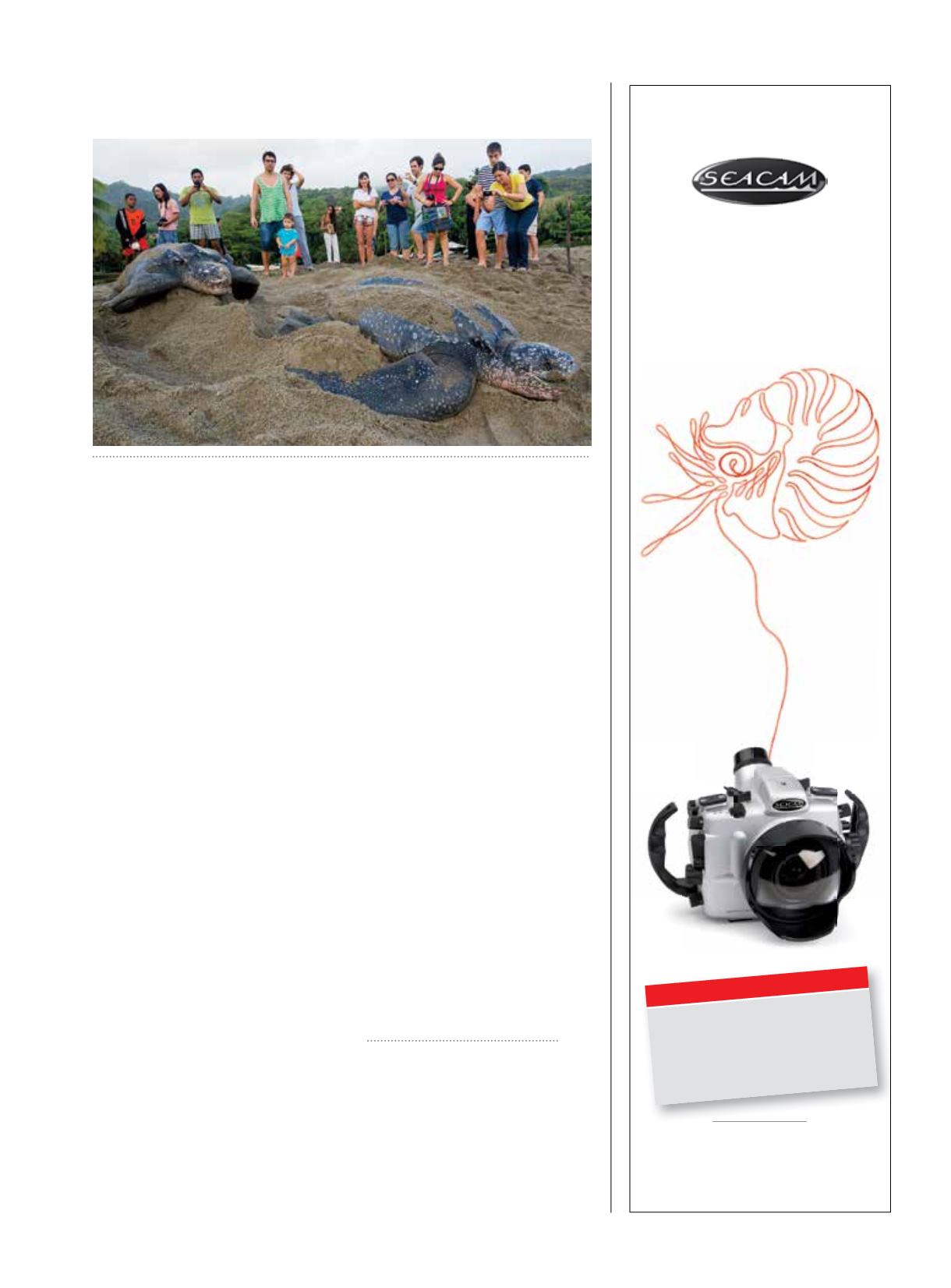
 ALERTDIVER.COM
ALERTDIVER.COM
|
25
gathered by the dozen prior to
storming the beach at nightfall.
During our long boat rides the
fishermen described the challenges
of making a living during nesting
season, unfortunately one of the
best times to fish. Almost every time
we went out on the water someone
at the fishing station was repairing
nets that had been ripped apart by
800-pound turtles. Scott Eckert,
leatherback expert and director of
science at Wider Caribbean Sea
Turtle Conservation Network,
reports that each year about 3,000
leatherbacks get entangled in
gillnets in Trinidad’s waters, with
a mortality rate of 33 percent, or
1,000 turtles. Local conservation
organizations are working with
fishermen to develop fishing
techniques that minimize bycatch,
but it’s a long and difficult process.
It would be hard to convince
the average tourist visiting
Trinidad during nesting season
that leatherbacks are endangered.
Entanglement in fishing gear,
coastal development, poaching,
boat collisions and the ingestion of
plastic bags (mistaken for jellyfish)
all take a huge toll. But there is
some good news: While the Pacific
population is in extreme distress, the
Atlantic and Caribbean population
appears to be on the rebound. In
2013 the International Union for
Conservation of Nature (IUCN)
upgraded the status of these giants
from “Critically Endangered”
to “Vulnerable,” because of
the recovery in the Western
Hemisphere population. Let’s
hope conservation and educational
programs continue to bear fruit and
that leatherback numbers recover
throughout their entire range.
AD
All flash and underwater
photography of
leatherbacks in Trinidad
were conducted with
permits and with guides
from local authorities and
sea turtle conservation
organizations.
Tourists flock to beaches during nesting season to observe the massive and endangered
leatherbacks, bringing revenue to the local economy.
Opposite, clockwise from top left:
A black vulture eats a hatchling at sunrise. To
compensate for losses due to predation, female leatherbacks produce an enormous
number of hatchlings to ensure the species continues into the future. Compare the
size between an adult nesting leatherback and a hatchling. At this stage, the babies
are incredibly vulnerable and have to grow up in a hurry — and be very lucky — to
survive. A female deposits dozens of eggs in her nest chamber at sunrise. An underwater
photographer comes face to face with a leatherback in a freshwater creek near the beach.
silver
cinema of dreams
800-451-3737
info@seacamusa.com www.seacam.comSEACAM
silver
NIKON D810
SEACAM
silver
CANON EOS5DS
SEACAM
prelude
CANON EOS7DMKII
SEACAM
prelude
NIKON D750
SEACAM
compact
SONY A7II
New housings out now!
SEA_016_01 IN USA 2.125x9.125+Ne
wHousings.indd 411.01.16 09:23
















